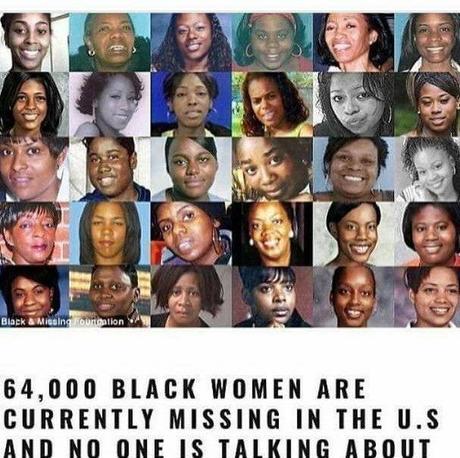
Credit: D.C. Missing Black Girls
501 children have been reported missing from the District of Columbia since the beginning of the year alone; a disturbingly high number of them were black or Latino children, and twenty-two cases remain unsolved as of the end of March ,according to the Associated Press. While the AP notes this rate of missing juvenile cases is not inconsistent with those of past years, the issue has gained a disproportionate amount of attention in recent weeks thanks to social media. Most noticeably, an Instagram post claiming that 14 black girls had gone missing in the D.C. area in the space of just 24 hours went viral at the end of March, which in turn inspired the hashtag #MissingDCGirls.
Eventually, however, this information was proven inaccurate. “At no point in recent weeks have 14 girls disappeared from D.C. in a single day,” the police later confirmed. At this point, the story most people focused on was the disputed information surrounding these cases less so than the young people who are actually missing from D.C. Some argued that the initial, inaccurate viral story about missing girls was ultimately more obstructive than helpful — and that, specifically, the use of social media to spread the false information at all was most problematic of all.
Take, for example, the images of these missing girls shared on social media. As The Outline noted, the social media posts “shrink original missing persons flyers, making important identifying and reporting information unreadable, rarely linking back to original sources,” therefore making the supposedly helpful posts useless. Additionally, people sharing missing children posters should make sure to confirm their source is legitimate, as “sometimes the missing children in the posts that you share are not actually missing,” according to one police station’s Facebook post. “They may actually be hiding for their own safety,” they continued, adding, “If the post wasn’t originated from a confirmed police source, or comes with a link to a reputable newspaper or media outlet showing that the police are actively searching, then it is likely not legitimate.”
While these are all valid points about this particular circumstance, there’s also no question that the media generally fails to report about missing black girls as much as they do about their white counterparts. Take the case of Madeleine McCann, for example. Ten years ago, a blonde little girl went missing while her family was on vacation in Portugal. Millions of pounds and a decade of police investigation have been invested in the case, for which there is still no trace of evidence about what happened. Little, if any, coverage has been given to the thousands of (predominantly) girls of color who go missing in D.C. every year — let alone the tens of thousands of women of colour who remain missing in the U.S. at large.
Belittling those who have shared information about missing girls of color, therefore, is ultimately harmful. Though much of the information shared recently has been revealed to be false, and was shared in unhelpful ways, discouraging individuals from spreading information about missing girls generally could prevent the spread of valuable information in the future—especially if the case is one that’s not a priority to police. Additionally, we shouldn’t discourage media outlets from covering an important issue that’s rarely on their agenda. Hopefully, going forward, rather than spread the news about these cases on social media, professionals will do their due diligence to accurately and consistently report about these missing girls.

